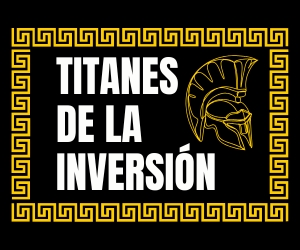Discover Dennis Hong's impact on the investment world, his winning strategy, and the role of ShawSpring Partners. Transforming the tech sector, one step at a time.
Home
»
Investments
»
WHAT IS AN INVESTMENT FUND
Ah, investment funds. That magical financial concept that floats in the air like an ambitious dream of retiring young and wealthy. But, what are they really? A tool of the devil or of your Harvard graduate? Discover what an investment fund is and how it can help you improve your trading strategies.

Basic Definition
What Is an Investment Fund?
At its core, an investment fund is a pool of assets that several investors combine to generate profits. Imagine a financial version of a cookie exchange party: everyone contributes a little and takes home a diverse assortment. Funds allow the small investor to play in the big leagues without having to mortgage their soul.
Main Types of Funds
Mutual Funds: The timeless classic. It combines the money of many small investors to buy a wide range of securities.
Index Funds: They put all their faith in a market index. Their credo: "if you can't beat them, join them."
ETFs: The chameleons of the market, they trade like stocks but contain all the diversity of a fund.
Why Consider Investment Funds?
In a word: diversification. But wait, there's more. Controlled risks, low entry cost, and professional management. Because, let's be honest, not all of us have 20 hours a week to follow the madness of Wall Street.
The Magic of Diversification
Do you remember the saying "don't put all your eggs in one basket"? Well, it's the mantra of investment funds. By diversifying, you can weather some market storms without feeling like your portfolio is drenched.
Benefits and Drawbacks
Access to Professional Management: Because sometimes we need more than a hunch based on Reddit memes.
Liquidity: Getting in and out of funds is typically easier than selling a stock nobody wants.
Associated Costs: Nothing in life is free, least of all on Wall Street. Watch out for the fees.
How It Works
Imagine investment funds as a DJ at a party: they pick the hits (securities) and ensure everyone (investors) is dancing together without stepping on each other's toes. But how do they work their magic?
Fund Mechanics
It all starts when you decide to put your money into a fund. This money is pooled with similar contributions from other investors and managed by a professional fund manager who invests it in a selection of stocks, bonds, real estate, or anywhere else they see potential. In other words, that person is setting the beat, choosing securities to try to maximize returns.
Quotes and Fluctuations
Unlike stocks that trade on an exchange, the fund's value—known as Net Asset Value (NAV)—is calculated once a day based on market closing. When it comes to investing, some choose to wait for the market to dip a bit before jumping in; others charge in immediately like a bull.
Fees and Terms You Should Know
Management fees: Your fee for having a DJ who plays only the greatest hits.
Front-end/back-end loads: Essentially a fancy way to say there's a price for getting in or out of the investment club.
Liquidity stipulations: Some restrictions on how long you need to keep your funds invested.
Performance and Risk
Often measured against benchmarks, like stock indices. Knowing if your fund is performing "above average" is the quickest way to decide if you should dance a little longer or leave the dance.
Comparison with Other Investment Models
The power of funds lies in offering diversification similar to other sophisticated instruments like ETFs, but without the need for an intensive strategy. Consider this your private jet compared to a commercial flight.
Practical Examples
Now that you've survived the theory, let's get straight to the action. Yes, it's time to take a trip to practice. Put on those financial glasses: it's time for some real-world examples.
Real Case: Mutual Funds and Economic Recovery
In 2008, some savvy investors began investing in mutual funds focused on sector recovery after the financial crisis. These funds concentrated on sectors that suffered but showed high resilience in the economic rebound, achieving significant long-term returns. Because, after all, it never hurts to say "I told you so."
ETFs: How to Leverage Market Flows
Consider an ETF that tracks the S&P 500 index. Imagine investing in this ETF right after a market drop: you reap the benefits when this index inevitably rises because, you guessed it, time is the market's best ally.
Practical Strategy Tips
Constantly Monitor: Funds are not always a buy-and-forget investment. Keep a keen eye on the fund's performance.
Diversify Your Portfolio: The royalty of financial Lego: make sure you have pieces of different sizes and colors.
Know Your Options: Research beyond the name. Each fund has its own set of rules and personality.
Learning From the Experts
Warren Buffett, known as the Oracle of Omaha, often suggests that for most investors, an index fund makes more sense than selecting individual stocks. Because, let's face it, we all want our investment attitudes to reflect the wisdom of a billionaire.
The Impact of Patience on Investment
As Benjamin Franklin once said, "He that can have patience can have what he will." This couldn't be truer in the world of investing. Patience is a virtue, even in trading.
YOU MAY ALSO BE INTERESTED






